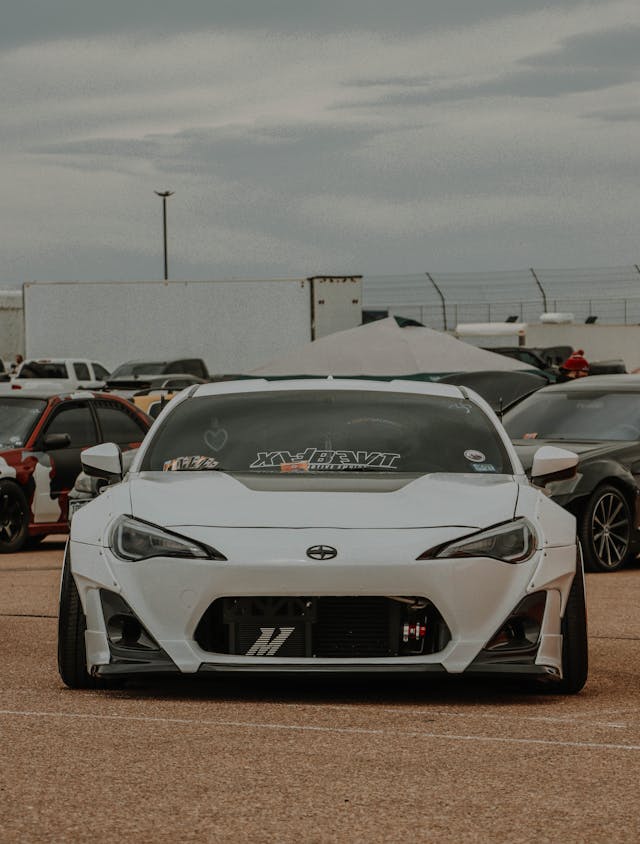Photo and Video Documentation of Classic Cars
The art of documenting classic cars through photography and videography is a nuanced field, requiring a keen eye and an understanding of both the technical aspects of the medium and the historical context of the vehicles. These visual records serve not only as a demonstration to automotive history and design but also as an invaluable tool in preserving, valuing, and marketing these timeless pieces. Yet, the question remains: what are the best techniques and tools to truly encapsulate the essence and allure of these classic automobiles? Let us begin this exploration together.

Key Takeaways
- Classic car documentation through photography and video emphasizes storytelling, focusing on the vehicle’s history, restoration, and unique design features.
- Essential equipment for quality classic car documentation includes DSLR or Mirrorless cameras, wide-angle and macro lenses, tripods, high-definition video gear, and post-processing software.
- Techniques in car photography include composition rules, strategic angle selection, background choice, and capturing dynamic shots to portray cars as moving entities.
- Post-processing techniques, such as color correction, cropping, sharpening, and the use of creative filters, ensure the final image or video enhances the car’s appeal.
- The presentation of documented classics combines high-quality visuals with engaging narratives, highlighting unique features and fostering appreciation for automotive history and craftsmanship.
Importance of Visual Documentation
The art of classic car collecting is as much about the vehicle as it is about the story behind it. Each classic car has its unique narrative, and visual documentation is a remarkable way of unfolding this tale. The process of visual storytelling engages viewers, creating an emotional connection that words alone might struggle to convey.
Visual documentation, whether through photographs or videos, captures not only the aesthetic appeal of the classic car, but also the intricate details of its design and craftsmanship. It brings to light the car’s history, its restorations, modifications, and its journey through time. Essentially, visual documentation is a celebration of the car’s architectural excellence, its mechanical sophistication, and the passion of those who have preserved it.
Moreover, the use of visual documentation in classic car collecting is not merely aesthetic. It serves a practical purpose as well. Detailed images and videos can be used for insurance purposes, for sale listings, or for meticulous record-keeping.
Essential Photography Equipment
Starting on the journey of photographing your classic car involves understanding the indispensable role of certain photography equipment. The first step is to choose the right camera. When it comes to camera types, Digital Single-Lens Reflex (DSLR) and Mirrorless cameras are the top choices for professional-quality photography. These cameras offer a multitude of settings and features that enable you to capture your classic car in its best light.
In addition to the camera, lens selection is another critical factor. A wide-angle lens is ideal for capturing the full breadth of the car in one shot. For more detailed shots, such as the iconic logo or intricate interior detailing, a macro lens is a must. Don’t forget a sturdy tripod for stability and sharper images.
Investing in a good quality flash is also advisable for shooting under various lighting conditions. It aids in balancing the exposure and adding depth to your images.
Video Recording Tools for Cars
Often, owners of classic cars wish to immortalize their prized possessions not only through still images but also via dynamic, enchanting videos. Video recording tools for cars are a crucial component of this process, providing a medium to highlight the car’s elegance and timeless beauty.
Firstly, a crucial tool for car video recording is a high-definition camera with a high frame rate capability, to capture the car’s motion smoothly. Additionally, camera stabilization is of utmost importance. A camera stabilizer or gimbal guarantees smooth, high-quality footage, eliminating shaky or blurred images. This tool is a boon for capturing moving shots, where stability is essential.
Harnessing the power of drone technology can also provide a unique perspective. Drone footage enables capturing overhead and panoramic shots, presenting the car in a broader context, and creating a compelling narrative. The drone’s ability to follow the car during motion adds a dynamic element, enhancing the overall video quality.
Techniques in Car Photography
In the domain of classic car documentation, photography holds a pivotal role, capturing the timeless allure and unique attributes of these automotive masterpieces. Our focus now shifts to the techniques in car photography, wherein we will explore the foundational principles, unravel the intricacies of lighting, and discuss the art of post-processing. This journey will equip us with essential skills to create powerful, engaging imagery that does justice to the intrinsic beauty of classic cars.
Understanding Car Photography Basics
Mastering the art of car photography can be a thrilling journey. It is a balanced blend of technical prowess and artistic intuition. The first fundamental step in this exciting expedition is understanding the basics, such as composition rules and angle selection.
Composition rules, the backbone of any great photograph, play a vital role in car photography. The rule of thirds, an essential composition rule, is a powerful tool that can be used to create balanced and dynamic images of classic cars. By dividing your frame into a 3×3 grid and positioning the car along these lines, you can create a sense of harmony and interest in your shots.
Angle selection is another important aspect of car photography. The angle at which a car is photographed can drastically alter the perception of its design and details. For instance, shooting from a low angle can make the car appear more dominant and imposing, emphasizing its size and stature. On the other hand, a high-angle shot can reveal the car’s top details, offering a unique perspective often missed in standard eye-level shots.
Understanding these car photography basics will set a solid foundation for your journey into the world of classic car documentation.
Lighting Techniques in Photography
Capturing the perfect shot of a classic car is substantially influenced by the lighting technique employed. The choice between natural and artificial lighting is essential in setting the mood of the shot, highlighting the car’s distinctive features, and creating a sense of depth and perspective.
Natural lighting, for instance, imparts a soft, warm, and realistic touch to the photos. The golden hour, that brief period just after sunrise or before sunset, offers the most visually striking natural light. It illuminates the car with a soft glow, accentuating its curves and contours while minimizing harsh shadows. Additionally, overcast days provide diffused, even lighting that prevents overexposure and stark contrasts.
On the other hand, artificial lighting provides complete control over the intensity, direction, and quality of light. It can be used to strategically illuminate specific parts of the car, create dramatic effects or compensate for inadequate natural light. Techniques such as light painting, where a light source is moved around the car during a long exposure, can add a creative and artistic touch to the shot.
Understanding and mastering both natural and artificial lighting techniques is vital for producing high-quality, compelling classic car photographs.
Post-Processing Classic Car Photos
Once the perfect shot is captured using the appropriate lighting techniques, the journey of transforming a classic car photograph into a work of art is far from over. Now comes the process of post-processing, an essential stage of modern photography that requires both technical acumen and artistic vision.
The post-processing phase begins with color correction. This is where the photographer fine-tunes the colors within the image to accurately represent the vehicle’s true hues, or perhaps to artistically enhance them. The objective is to guarantee that the classic car’s original, vibrant colors are faithfully represented, while also creating an aesthetically pleasing balance within the frame.
Next, the aspect ratio is adjusted. This determines the proportional relationship between the image’s width and height. The correct aspect ratio can make the difference between a photograph that seems distorted or one that appears balanced and harmonious. It’s vital to choose the aspect ratio that best showcases the car’s design features, while also fitting the intended display or print format.
In essence, post-processing is where the magic happens. It is an opportunity to refine, enhance, and personalize your classic car photographs, turning a good shot into an extraordinary image.
Filming Classic Cars Effectively
In the domain of automotive cinematography, filming classic cars effectively is an art form that requires a keen eye and an intimate understanding of these timeless beauties. This task necessitates a passion for these mechanical marvels, a technical depth of understanding, and a detail-oriented approach to capture their essence.
Car angles play an essential role in showcasing the aesthetic allure of classic cars. The perspective should highlight the unique design elements – the curves, chrome accents, and iconic emblems that set them apart. A low angle shot can accentuate the power and dominance of these vehicles, whereas a high angle shot can convey the car’s sleek design and elegant lines.
Motion shots are another effective technique to capture the dynamism of classic cars. Filming the car in motion, especially with a tracking shot, can emphasize the car’s speed and agility, thereby personifying it as more than just a static object. The background in motion will provide a stunning contrast to the car, demonstrating its timeless beauty in a world that’s constantly moving.
Editing Photos and Videos
After immortalizing the classic cars through the lens, the next essential stage involves editing the captured photos and videos. This process is paramount to emphasize the unique characteristics and detailing of the vintage vehicles, accentuating their timeless charm and elegance.
Advanced editing software plays a pivotal role in this stage. These tools offer a myriad of features such as color correction, cropping, brightness adjustments, and much more. Color correction, in particular, is a powerful feature that can dramatically improve the aesthetic appeal of your images and footage. It guarantees that the colors of the classic cars are captured accurately and vividly, highlighting the vibrant hues and intricate details that make these vehicles truly unique.
Furthermore, the editing stage also allows us to remove any unwanted elements that may detract from the main subject. This could include background noise in videos or distracting objects in photos. It is critical to maintain a keen eye for detail during this stage to guarantee that the final product is of the highest quality.
Ultimately, editing photos and videos of classic cars is both an art and a science, requiring a balance of technical skills and creative vision.
Showcasing Your Documented Classics
With the meticulously edited photos and videos of your classic cars, the stage is set to showcase these stunning vehicles to the world. Classic car showcases are much more than just an exhibition; they’re an opportunity to present the rich history and meticulous restoration process that these vehicles have undergone. Showcasing your documented classics allows you to highlight the unique features and timeless designs that make these cars special.
In the domain of vintage car exhibitions, the presentation is key. High-quality, professionally edited photos and videos can capture the attention of fellow enthusiasts and potential buyers, drawing them into the narrative of each car’s journey from past to present. Detail-oriented documentation serves to highlight the intricate craftsmanship and meticulous care that went into restoring each vehicle to its former glory.
Moreover, showcasing your documented classics provides a platform to share your passion for these automotive gems. The technical aspects, such as the engine configuration, bodywork, and interior details, can be highlighted in your documentation. This combination of detailed imagery and passionate storytelling can enthrall audiences, creating a memorable experience that elevates the value and appeal of your classic cars.
